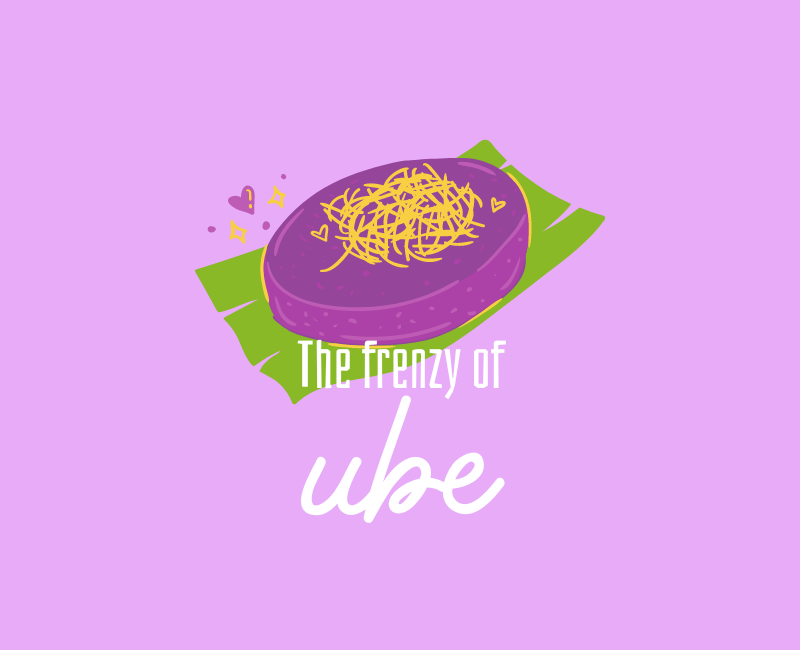The frenzy of ube
From Trader Joe's line of ube flavored and inspired products to the all-ube festival of merchandise and food, everyone is crazy for ube.
Dioscorea alata, also known as purple yam, ube (/ˈubɛ/, /ˈubeɪ/), or greater yam, among many other names, is a species of yam (a tuber). The tubers are usually a vivid violet-purple to bright lavender in color (hence the common name), but some range in color from cream to plain white. It is sometimes confused with taro and the Okinawa sweet potato (Ipomoea batatas cv. Ayamurasaki), although D. alata is also grown in Okinawa where it is known as beniimo (紅芋). With its origins in the Asian tropics, D. alata has been known to humans since ancient times.
— The definition of ube, according to Wikipedia
With the most recent Ube Festival that was held at Canal Street Market over the weekend (which, by the way, was an idea stolen from the original weekend festival held in California), I’ve been seeing a trend of ube inspired or infused food. Trader Joe’s has been going crazy making all sorts of ube products, such as ube jams, ube pancake mix, ube tea cookies, and ube ice cream (sold sporadically across the locations throughout the US).
I never really knew what ube was except that it was some kind of purple food that made the ice cream on top of halo-halo taste like a sweet-flavored yam. One thing I came into realization to was how deep this ultraviolet food hits to home - I didn’t realize how deeply connected ube is to Filipino culture. I asked my dad one day whether or not he had any personal connections with ube. “Mama (my lola) used to cook it every new years. Because ube halaya is sticky, it was a way to hold the family together for the new year” my father told me one evening over the phone.
Ube in Filipino culture is served and eaten in many different forms - as mentioned, it is the typical flavor served with halo-halo which is a Filipino dessert consisting of crushed ice, fruit preserves, taro, evaporated milk, garbanzo beans, coconut, and cubes of flan (amongst the many other variations of halo-halo). It can also be a flavor of puto in a recipe known as puto bumbong, a steamed rice cake, as well as found in many pastries like the filling of a hopia, ube pan de sal, or sometimes you can also find it bibinka.
According to Meryenda, another Substack newsletter exploring the ways and food of the Filipino diaspora, ube was once considered a sacred food - legend in Bohol says that ube was the only crop that survived during the famine and droughts. Because of this, Filipinos treat it with the utmost respect: "I think the practicing of kissing the ubi originated… to make people respect a very important root crop for us.” says Jose Marianito Luspo, a historian.
This summer, I noticed a revival of ube in the American food scene where it’s established as the Filipino-American “breakout food”, according to Paste Magazine. As aforementioned, Trader Joe’s has introduced to us a line of ube-inspired products and an ube-inspired festival has opened this past weekend.
Why is it making a comeback?
Recently, we have been seeing more and more of Filipinos on the screen and on paper as more of our stories and conversations on identity are becoming more prevalent. Films such as the recently released Easter Sunday with Jo Koy, The Filipino Brothers written and directed by Dante Basco (film review coming soon!), and books such as Miguel Syjuco’s I was the president’s mistress!!! and Brown Girls by Daphne Palasi Andreades. With this in mind, as conversations surrounding the Fil-Am experiences expand, an appreciation for culture and community comes along with this “Filipino renaissance” as my friend had called it.
Also, who doesn’t love the taste of ube? It’s rich in sweetness and color, the vibrant purple drawing you in. It’s not just the attractiveness in taste and appearance, but the aspect of bringing together a community. As my dad said, our family includes ube in our endless plates of Filipino food because it holds our family together like sticky ube.





